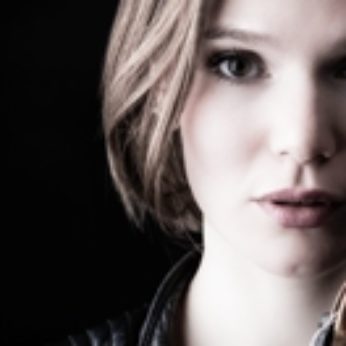Composer: Ludwig van Beethoven (b. 1770 - d. 1827)
Performance date: 07/07/2016
Venue: Bantry Library
Composition Year: 1812
Duration: 00:23:50
Recording Engineer: Richard McCullough, RTÉ lyric fm
Instrumentation: vn, vc, pf
Instrumentation Category:Duo
Artists:
Tamar Beraia -
[piano]
Tamsin Waley-Cohen -
[violin]

Beethoven’s last and greatest violin sonata
dates from 1812, the year of the famous Immortal
Beloved letter and the Seventh and Eighth Symphonies. The previous year he
had written his last piano trio, the matchless Archduke Trio Op.97. The third remarkable chamber work from
this period is the F minor Quartet Op.95, nicknamed Quartetto Serioso on account of its difficulty, dating from October 1810. The three works were published together
in 1816. The Sonata was not only dedicated to Rudolph but he also premiered it
with the French violinist Pierre Rode. Beethoven probably began the Sonata as
his unique way of dealing with the double onslaught of disappointment in love
and financial crisis – the Napoleonic Wars had led to a catastrophic
devaluation of the Austrian currency reducing Beethoven’s income to a fifth of
its previous level. However the spur to finish the Sonata was undoubtedly the
visit of the famous violinist to
in December, just as Bridgetower’s visit nine years earlier inspired the
Kreutzer. Rode was noted for his pure, classical style of playing and Beethoven
went to a lot of trouble to write a work to suit these qualities. It seems Rode
did not like boisterous, virtuoso finales: In
our finales we like to have fairly noisy passages, wrote the composer to
his patron a few days before the premiere, but
R does not care for them – and so I have been rather hampered.
The necessity of suiting the music to the
performer may account for the Sonata’s air of tranquil beauty, a world apart
from the flamboyance of the Kreutzer. They are in many ways diametrical
opposites and though the G major Sonata is undeniably the greater work, it
remains something of an unknown masterpiece. It does however share with the
Kreutzer an opening by the solo violin, but in the gentlest possible way with a
soft, four-note figure adorned with a trill, immediately answered by the tenor
register in the piano. Beethoven’s genius for lending significance to the
slightest phrase means this figure turns out to be the defining feature of the
main theme and the most characteristic phrase of the whole movement. It quickly
leads to an unusually tender and lyrical first subject. There is a tripping
second subject, announced by the piano, which, right at the end of the
exposition, blossoms into a particularly eloquent new theme. After the repeat,
this irresistible idea is taken up in the development, which flows in a gentle
unbroken line until a quiet exchange of trills beckons back the first subject.
The coda also explores the opening trills before an abrupt final cadence clears
the air for the profound meditation of the slow movement.
This Adagio
begins with one of those noble chorale-like themes that recur in Beethoven from
the Pathétique Sonata to the late
quartets. It is given to the piano, and the violin enters with a gentle
dovetailing of its final cadence before offering her own more intimate melody.
Later the roles are reversed, each instrument playing the other one’s melody
with subtle variations and decorations. The G minor Scherzo follows without a
break. This terse movement encloses a smiling trio in E flat, in the easy-going
style of a country dance. After the da
capo a brief coda translates the Scherzo theme into G major, ending with an
abrupt flourish.
The final movement is a set of seven variations on a
gentle, almost child-like theme. The first four variations are easily
distinguishable; all except the first are double variations, each eight bar
section being itself varied instead of merely repeated. The climax comes with Adagio espressivo fifth variation, a
miracle of graceful ornamentation recalling the deeply meditative mood of the
slow movement. In the last two variations Beethoven finally lets himself go,
but keeps reining himself in for another last moment of tender retrospection
Copyright © 2025 West Cork Music. All rights reserved.
Designed and developed by Matrix Internet